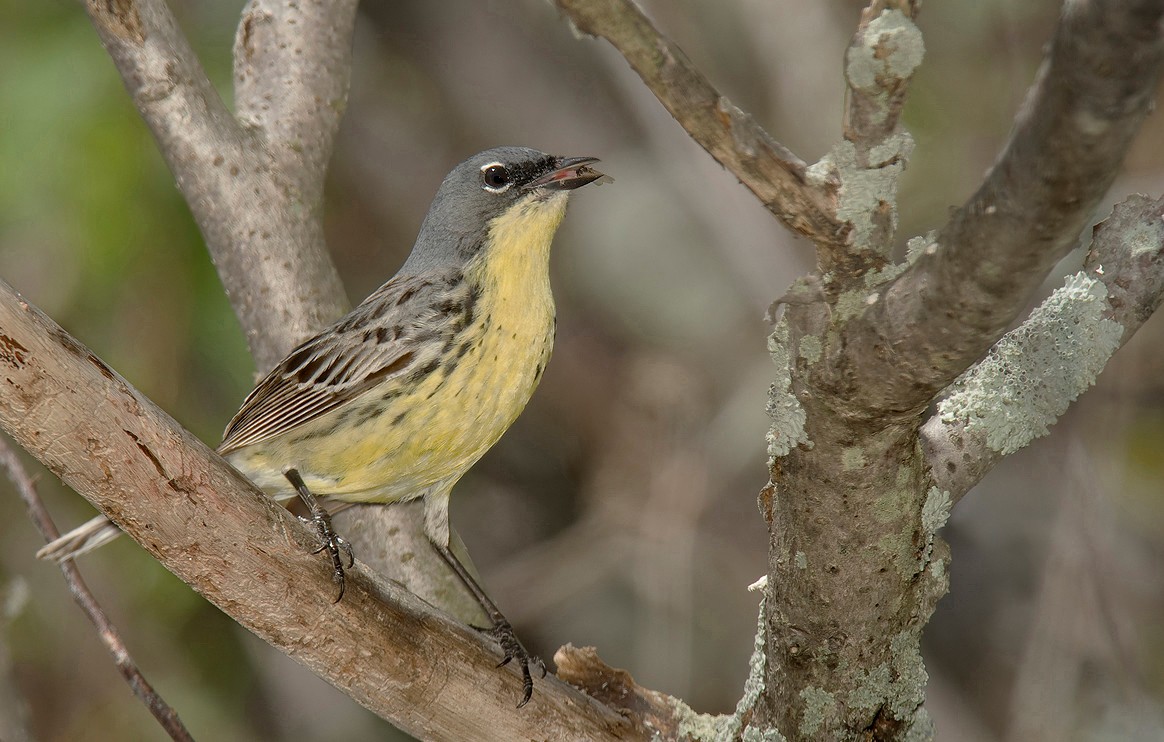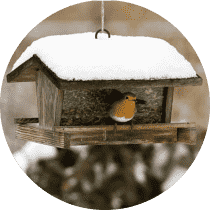Kirtland's Warbler
A species of Setophaga Warblers, Also known as Jack Pine Bird Scientific name : Setophaga kirtlandii Genus : Setophaga Warblers
Kirtland's Warbler, A species of Setophaga Warblers
Also known as:
Jack Pine Bird
Botanical name: Setophaga kirtlandii
Genus: Setophaga Warblers
Content
Description People often ask General Info
 Photo By William H. Majoros , used under CC-BY-SA-3.0 /Cropped and compressed from original
Photo By William H. Majoros , used under CC-BY-SA-3.0 /Cropped and compressed from original Description
Male Kirtland's warblers have bluish-grey upper body parts, with dark streaks on the back, yellow bellies, and dark streaks on the flanks and sides. It has black lores (cheeks) and a distinctive, large and conspicuous broken white eye ring, which it only shares with Setophaga coronata. Females and juveniles are similar, but are browner on the wings and back and are not as boldly or brightly marked. It frequently bobs its tail up and down, which is uncommon in northern warblers. At 14–15 cm (5.5–5.9 in) and 12–16 g (0.42–0.56 oz), it is the largest of the numerous warblers formerly classified in the genus Dendroica. The Kirtland warbler has a wingspan of 22 cm. Its mating song is a loud chip-chip-chip-too-too-weet-weet often sung from the top of a snag (dead tree) or northern pin oak (Quercus ellipsoidalis) clump. This song can be heard over 400m away in good conditions. In its overwintering grounds it does not sing but makes loud "chip" noises from low in dense bushes. The eggs are a "delicate" pinkish white when fresh, fading to a dull white after a time. There are a few scattered sprinkles in various shades of brown and pink, these sprinkles and blotches concentrated at the top or form a sort of wreath at the larger end. The egg is not very glossy. It is 18 by 14mm in size. The shell is very thin. 
Size
11-13 cm (4.5-5 in)
Life Expectancy
9 years
Nest Placement
Ground
Clutch Size
3 - 6 eggs
Incubation Period
1 - 2 broods
Number of Broods
13 - 15 days
Nestling Period
8 - 10 days
Feeding Habits
Kirtland's Warbler consumes insects like spittlebugs, aphids, ants, wasps, beetles, and caterpillars, alongside fruits such as blueberries. While wintering, it forages lantana berries and others from black torch and snowberry, and is observed probing flowers for nectar and hunting on the ground.
Habitat
Kirtland's Warbler's breeding habitat is young jack pine forests with 6-20-year-old trees and low shrubs, located on sandy soil. This environment offers dense coverage with lower branches ideal for nesting. As the forest matures, kirtland's Warbler seeks new areas. Wintering grounds are Bahamian coppice with thick shrubbery and a thin canopy, indicating a preference for shrubby regrowth over pineyards.
Nest Behavior
Females of kirtland's Warbler engage in nest construction and egg-laying in these concealed nests, ensuring offspring are hidden from predators. Both parents dedicate themselves to the care of their young, with a clear division of roles throughout the breeding period.
Nest Characteristics
Kirtland's Warbler's nests are ground-based, situated at the edge of jack pine thickets, often obscured by grass and low plants. Construction involves grasses, sedges, pine needles, with interiors of rootlets, deer hair, and fibrous grasses, forming a simple cup.
Dite type
Insectivorous
People often ask
General Info
Feeding Habits
Bird food type
Bird Feeder Type

Platform

Small Hopper
Behavior
Kirtland's Warbler showcases a lifestyle deeply intertwined with dense underbrush habitats, where daily activities include adeptly navigating shrubs and habitual tail pumping. Within their preferred jack pine understory, these warblers exhibit high population densities, achieving up to 100 males per square mile. Kirtland's Warbler's territorial males assert dominance vigorously, with initial mating season interactions occasionally escalating to physical confrontations. Vocalizing from the loftiest branches, often oaks amid shorter pines, the males attract mates. Post-mating, the female carefully selects nesting grounds, constructing the nest solo. The pair, seasonally monogamous, cooperatively engage in feeding their nestlings. A notable behavior is their susceptibility to nest parasitism, particularly by Brown-headed Cowbirds; kirtland's Warbler does not discern the foreign eggs, leading to potential brood compromise.
Distribution Area
It was originally only known from Kirtland's home state of Ohio, and in 1906 it still bred in Ohio. In the mid 20th century the breeding range of Kirtland's warbler was reduced to a very limited area in the north of the Lower Peninsula of Michigan. In recent years, breeding pairs have been found in the Upper Peninsula of Michigan, Wisconsin, and southern Ontario due to the expanding population. The birds winter in The Bahamas and nearby Turks and Caicos Islands, where they are found on all islands investigated. A number also overwinter in the Dominican Republic. Overwintering birds have been collected and sighted a number of times in Florida, it has been recorded as a rare accidental on Bermuda, Cuba and Jamaica, and there is an uncorroborated report from coastal Mexico. It has also been observed in the summer in Québec, although it is not known to breed here. The birds first migrate from The Bahamas west to Florida and South Carolina in the second half of April to early May, and from there move further northwest and westwards until they reach the Mississippi River, which they then followed upstream to the mouth of the Ohio River during May. They reached their breeding grounds early in June. They leave their breeding range between August and October. 
Species Status
Not globally threatened.
Scientific Classification
Phylum
Chordates Class
Birds Order
Perching birds Family
New world warblers Genus
Setophaga Warblers Species
Kirtland's Warbler